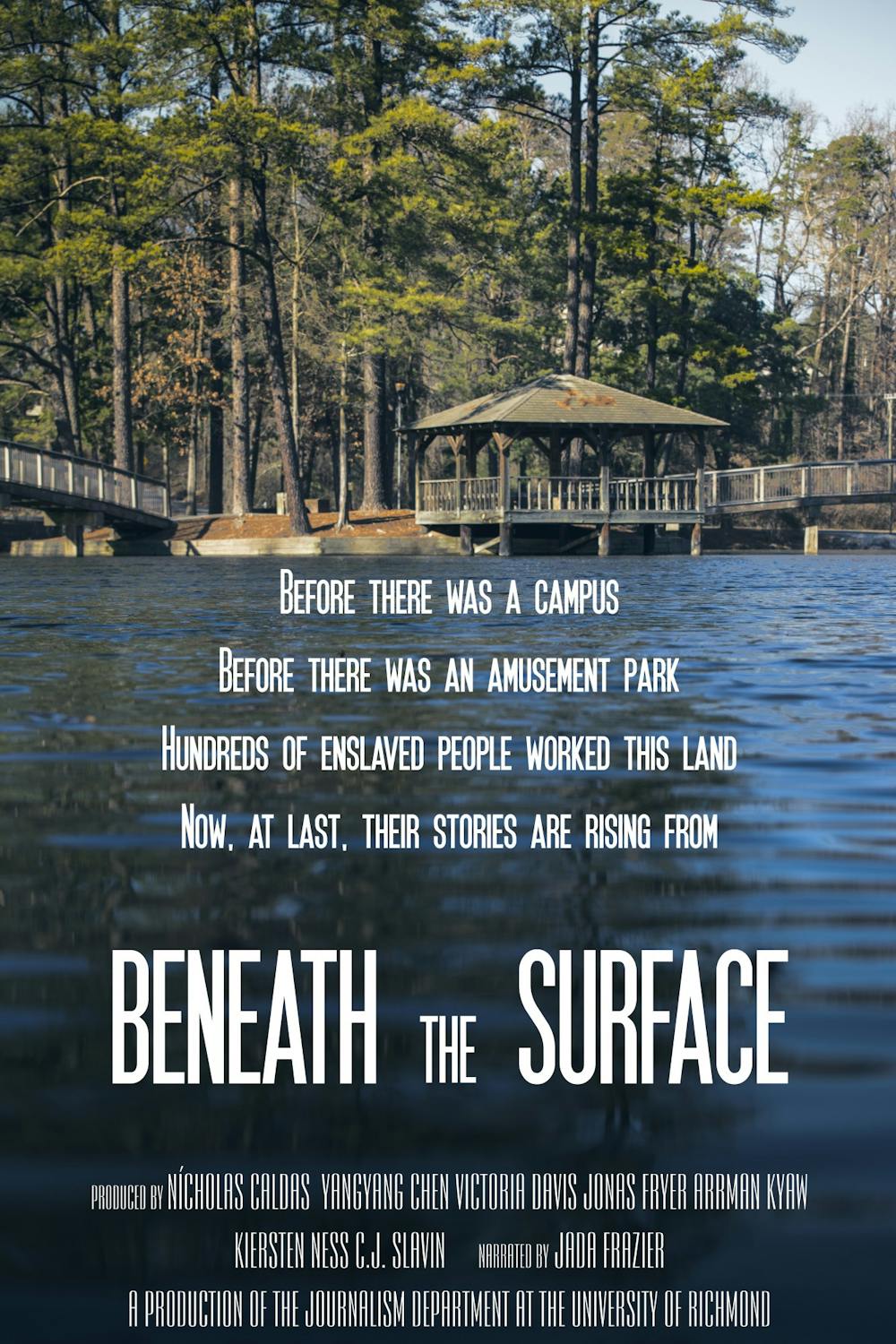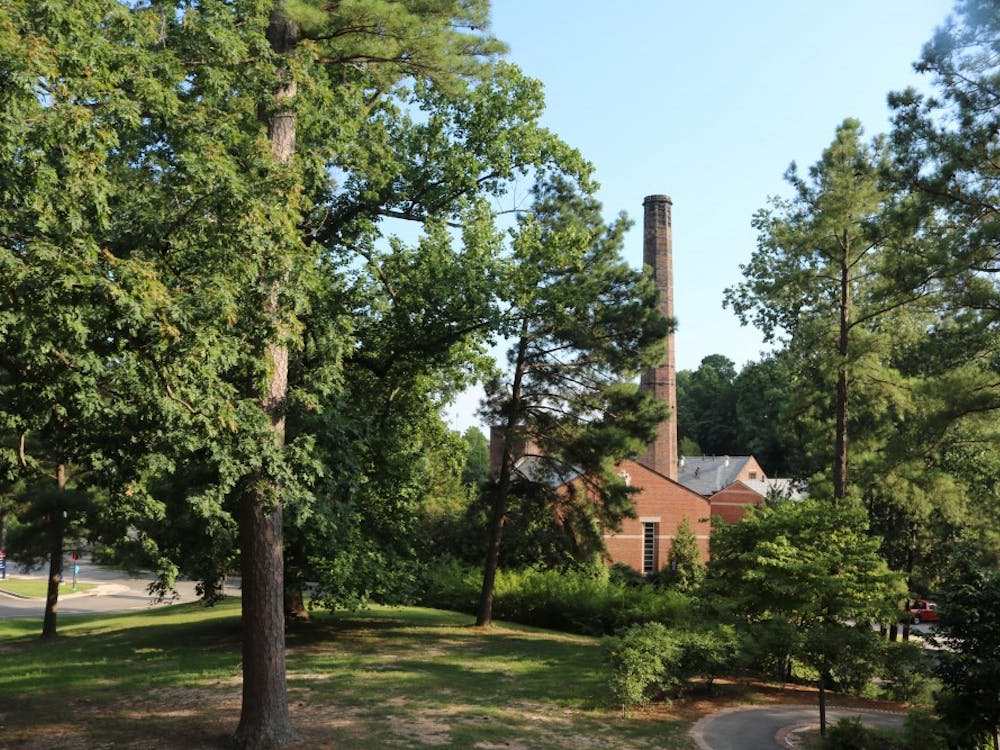Editor's Note: Robert Hodierne serves as The Collegian's faculty adviser.
"Beneath the Surface” begins with aerial views of University of Richmond buildings and glamor shots of Westhampton Lake. But as the student-made documentary begins to play a voiceover, the controversial past of UR's land comes to light.
This past fall, seven students took the Documentary Journalism course with one common goal in mind: make an effective film. The next step, choosing a topic, was easy after seeing a story in The Collegian that ran early in the school year, said Robert Hodierne, chair of the journalism department, who taught the course.
“I saw the story about a potential slavery burial ground on campus and thought, ‘bingo,’” Hodierne said at the film’s screening on Jan. 21 in the Ukrop Auditorium. “It’s cinematic gold. It’s visual. It’s dramatic. We had to make our film about it.”
With the topic set, the class worked on uncovering the facts.
“We didn’t realize until we started the project that there already was a presidential commission looking into the racial history of the university,” Hodierne said. “Because of that, the university administration didn’t cooperate with the film students and turned down requests for interviews.”
The commission submitted a report titled “Knowledge of This Cannot be Hidden: A Report on the Westham Burying Ground at the University of Richmond” on Dec. 28, 2019. The report confirms that UR was aware as early as 1912 that the grounds had been used for burial. The cemetery was likely for enslaved persons, based on confirmed knowledge that the grounds were a plantation as well as references to several historical sources stating it was used for African American burial.
President Ronald A. Crutcher sent a letter to the UR community detailing the commission's findings and expressing extreme remorse for the way life was degraded and how UR had not respected the burial site in the past.
The film students did not have this knowledge at the beginning of the semester. Instead, through interviews with Dywana Saunders, Boatwright Library research associate; Elvatrice Parker Belsches, public historian; V. Cassel Adamson, Jr., the current owner of the former plantation house and Mark Howard, senior geologist at NAEVA geophysics, the students began discovering the truth.
Their interview clips in the film detail the history of the land as a slave-holding plantation owned by Benjamin Green, which was also once an amusement park before it became the site of a college. A brief overview of the land's history is given in the film.
The film also touches on research done before the official report was released that would suggest that the UR campus is a burial ground, including a map of the plantation indicating a graveyard as well as the discovery of bones by a crew of workmen.
“We all put in a lot of work to the film because we always wanted to do better,” said YangYang Chen, a junior in the class. “When we took a shot and we were not satisfied we would go back to the site and take it over and over again.”
Enjoy what you're reading?
Signup for our newsletter
The film also discusses life on the Green plantation, displaying financial records from Green, listing his slaves as assets without any names.
It also revealed that the Westhampton Lake on campus was built by slaves.
“The lake is a central landscape feature of this campus,” Hodierne said. “There’s hardly a publicity shot of this campus that doesn’t include the lake. To find out it was built by enslaved people — to me was just jaw dropping.”
Both Hodierne and Chen said the film was intended to tell an important and meaningful story to the UR community.
“This story and this film will live on,” Hodierne said.
Senior Kelsey Norris, who attended the screening, echoed this sentiment.
“I knew nothing about the topic before the film,” said senior Kelsey Norris. “After, I want to know more about the study and where it’s going from here.”
Contact news contributor Alexandra Maloney at alexandra.maloney@richmond.edu.
Support independent student media
You can make a tax-deductible donation by clicking the button below, which takes you to our secure PayPal account. The page is set up to receive contributions in whatever amount you designate. We look forward to using the money we raise to further our mission of providing honest and accurate information to students, faculty, staff, alumni and others in the general public.
Donate Now



